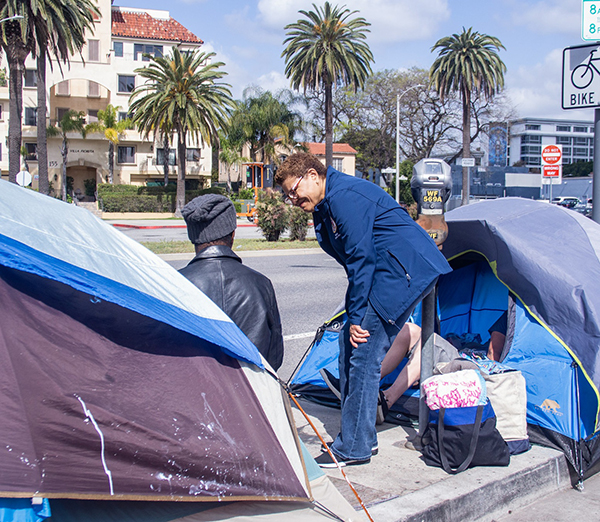By Ray Richardson
Contributing Writer
LOS ANGELES – When Mayor Karen Bass was sworn in last Dec. 11, she reminded voters of a campaign promise to place at least 17,000 of the city’s enormous homeless population into temporary or permanent housing by the end of 2023.
Six months later, Bass is already within 82% of her goal. As of June 13, Bass reported that 14,381 homeless citizens in LA have been “brought inside.”
The numbers reflect a strong commitment from Bass’ campaign, but Bass and her team of housing experts admitted there are still major challenges ahead that will prolong the city’s overwhelming homeless crisis.
“Along the way in this process, we’ve discovered some out of date practices,” Bass said June 13 at a press briefing to update the city’s fight against homelessness. “This has been a pilot program for us in the first six months. Our system is still being refined.”
Several programs under Bass’ direction, including Inside Safe and the Los Angeles Homeless Services Authority, have drawn criticism for slow response times in providing resources and medical care for people waiting to transition from temporary to permanent housing.
Other complaints have targeted the amount of paperwork, including a 35-page document, that has made the transition more difficult.
City officials have also been battling a shortage of hotel and motel rooms, which Bass cites as the “biggest problem” facing her mission to reduce L.A.’s homeless crisis.
“We don’t want to put everybody in hotels in South L.A.,” Bass said. “We’re trying to find places in other areas of the city. I’m concerned that motels are not a long-term solution for us.”
Funding has not been a major issue. Bass said the federal Housing and Urban Development Department (HUD) has delivered $260 million in the first six months to help the city’s efforts.
California Gov. Gavin Newsom promised funding to make at least 500 hotel or motel units available to assist with temporary housing.
More money and resources appears to be on the way or is already available. At least $60 million has been appropriated for new housing sites, $80 million for renter protections and $23.4 million to cover the costs for temporary residents needing further mental health treatment.
The lack of “wrap-around” services for temporary residents has been a concern for city officials. While paperwork is processed, residents in motels have experienced delays in getting housing referrals, medical screenings, basic necessities, financial counseling and employment assistance.
Bass cited staffing issues with community organizations and service providers assigned to help with the transition process.
“We’re putting a lot on our providers and they need help,” Bass said. “A lot of providers have a small staff. We’re working hard to fix this issue.”
In spite of the challenges, the city has reached significant achievements in getting people off the streets. Among the 14,381 people brought inside in the first six months, 10,049 were placed in interim housing and 1,344 transitioned into permanent housing.
According to data released at the June 13 press briefing, the Bass administration has generated a 27.9% increase in providing temporary or permanent housing in the first six months of 2023 compared to the same period in 2022.
“We are getting people indoors quicker,” said VaLecia Adams Kellum, chief executive officer at the Los Angeles Homeless Services Authority and a consultant to the Mayor’s Office. “And we’re getting people into permanent housing much faster. What used to take 120 days, now takes only about 45. Is our system perfect? No. But there’s a sense of urgency now and a real commitment.”
Bass touted the fact that several large homeless encampments in areas such as Hollywood, Venice, Harbor City, South L.A. and the Cahuenga underpass below the Hollywood (101) Freeway have been cleared and cleaned up.
The key factor for Bass is that the areas have not been re-populated by homeless citizens.
“I want to be able to see the path we’re trying to create,” Bass said. “I do not believe in leaving people languishing on the streets while buildings are being built. What I hope people are seeing, is that the encampments that used to be in certain places, are gone and will stay that way.”
Ray Richardson is a contributing writer for The Wave. He can be reached at rayrich55@gmail.com.









